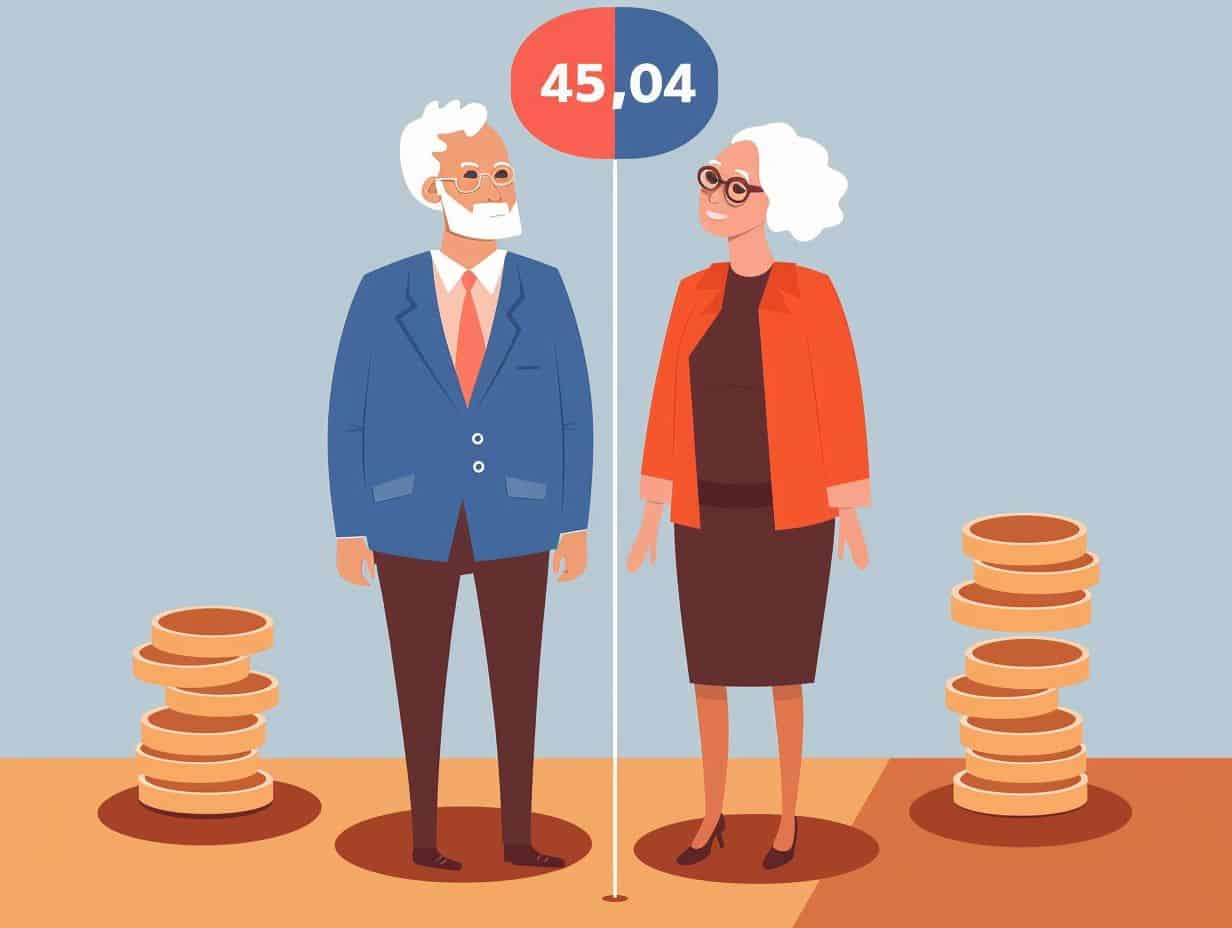- Our content is independently written and reviewed by trusted reviewers & fact-checkers.
- We can earn money by connecting you with top Gold IRA Companies. Learn how our reviews work.
- Want to learn more? Meet our authors and explore our editorial policy.
Are you confused about the differences between 403(b) and 457(b) retirement plans? We break down everything you need to know about these two popular retirement savings options. From understanding contribution limits to exploring key variations between the plans, we will help you make an informed decision on which plan may be best for your financial future. Stay tuned for tips on effective retirement planning and choosing the right retirement plan for your needs. 
Key Takeaways:
- Both 403(b) and 457(b) plans are retirement savings options, but they have key differences in terms of contribution limits, eligibility criteria, and tax implications.
- The decision between 403(b) and 457(b) should be based on individual financial goals, employment status, and the availability of these plans through employers or financial service providers.
- Effective retirement planning involves considering factors such as contribution limits, tax implications, and eligibility criteria, and seeking guidance from financial advisors can help in making the right choice between 403(b) and 457(b) plans.
403(b) vs. 457(b): Understanding the Key Differences
In the realm of retirement planning, it is imperative to grasp the fundamental disparities between 403(b) and 457(b) plans to facilitate prudent decision-making and ensure financial stability. Although both plans provide opportunities for tax-advantaged retirement savings, they possess unique attributes and eligibility requirements tailored to distinct categories of employees. 403(b) plans are typically extended to employees of non-profit organizations, educational institutions, and religious entities, permitting them to allocate a portion of their income towards the plan. Conversely, 457(b) plans are predominantly accessible to employees of state and local governmental bodies. Both plans are subject to contribution limits prescribed by the Internal Revenue Service (IRS), with 403(b) plans incorporating a catch-up provision for employees who have rendered at least 15 years of service. While investment choices within 403(b) plans are often confined to annuities and mutual funds, 457(b) plans may present a more expansive array of investment alternatives.
Overview of 403(b) and 457(b) Retirement Plans
403(b) and 457(b) retirement plans serve as tax-advantaged savings arrangements provided by employers, including federal, state, local government entities, non-profit organizations, and various institutions, to assist employees in accumulating funds for retirement. These plans afford individuals the opportunity to make contributions, capitalize on investment growth, and execute strategic withdrawals upon retirement. The primary objective of 403(b) and 457(b) plans is to facilitate employees in establishing a financial safety net for their post-retirement years. While eligibility criteria for these plans exhibit some variability, the target demographic typically encompasses personnel associated with educational establishments, specific non-profit bodies, governmental entities, and other designated organizations. A critical advantage associated with these retirement plans is the capacity to make pre-tax contributions, thereby mitigating current taxable income and fostering the potential for tax-deferred growth. Moreover, many employers extend matching contributions, amplifying the retirement savings potential for participating individuals. Regarding investment alternatives, 403(b) and 457(b) plans commonly furnish a spectrum of choices, ranging from mutual funds to annuities. This diverse array enables individuals to tailor their investment strategies in alignment with their risk tolerance levels and overarching financial objectives.
What Is a 403(b) Plan?
A 403(b) plan is a tax-advantaged retirement savings vehicle offered to employees of specific organizations, including nonprofits and government entities. This arrangement permits employees to make contributions towards their retirement, often accompanied by employer-matching contributions and an array of investment opportunities to facilitate savings accumulation over time. Within a 403(b) plan, employees typically have the option to allocate a portion of their salary on a pre-tax basis, thereby lowering their taxable income. Employers may extend the benefit of matching a specified percentage of the employee’s contributions, thereby augmenting the retirement savings pool. With regards to investment alternatives, individuals typically have the liberty to choose among various options such as mutual funds, annuities, or target-date funds, enabling them to customize their investment approach in alignment with their risk tolerance and retirement aspirations. It is imperative to highlight that the federal retirement age, which governs the commencement of full Social Security benefits, assumes a pivotal role in retirement strategizing and decision-making within the realm of a 403(b) plan.
Explanation of 403(b) Contribution Limits
A comprehensive understanding of the contribution limits associated with a 403(b) plan is crucial for optimizing retirement savings potential. These limits establish the maximum allowable contribution amounts for employees on an annual basis, with specific provisions in place for catch-up contributions for individuals nearing retirement age. The regular contribution limits for a 403(b) plan are established by the Internal Revenue Service (IRS) and are subject to annual adjustments. As of 2021, individuals under the age of 50 are permitted to contribute up to $19,500 per year towards their 403(b) plans. Additionally, individuals aged 50 and above have the option to make catch-up contributions, with an additional limit of $6,500, enabling them to contribute a total of $26,000 annually. Participation eligibility in a 403(b) plan is typically determined by the employer, with a majority of nonprofit organizations, public schools, and specific religious institutions offering this retirement savings opportunity to their employees.
What Is a 457(b) Plan?
The 457(b) plan is a retirement savings option available to employees of state and local governments, as well as specific nonprofits. It shares similarities with a 403(b) plan in that it enables individuals to contribute towards retirement, potentially benefiting from employer matches and investment opportunities. Primarily tailored for state and local government employees and designated tax-exempt organizations, the 457(b) plan offers a notable advantage: contributions can be deducted directly from an employee’s paycheck before taxes, thereby reducing taxable income. Employers may also choose to contribute to the plan on behalf of their employees, offering added retirement savings incentives. Employees nearing the federal retirement age can utilize a 457(b) plan to supplement their retirement income and bolster financial security.
Insight into 457(b) Contribution Limits
Understanding and effectively managing the contribution limits of a 457(b) plan is essential for optimizing retirement savings strategies. These limits dictate the maximum annual contributions that employees can make, including provisions for catch-up contributions for older employees. Employee eligibility for 457(b) plans is typically restricted to government and select non-profit employees. As of 2021, the standard contribution limit stands at $19,500, while individuals aged 50 and above have the opportunity to make additional catch-up contributions of up to $6,500. A notable benefit of 457(b) plans lies in the diverse range of investment options available, enabling participants to customize their portfolios based on their risk tolerance and financial objectives. It is important to note that the IRS oversees these contribution limits, ensuring adherence to regulations and promoting equitable practices in retirement savings. 
Key Variations Between 403(b) and 457(b) Plans
Both 403(b) and 457(b) plans represent valuable retirement savings instruments, yet they differ significantly in terms of contribution limits, withdrawal penalties, investment choices, and employer contributions. Understanding these distinctions can assist individuals in determining the most appropriate plan aligned with their financial objectives. 403(b) plans, commonly referred to as Tax-Sheltered Annuities, are frequently available to employees in non-profit entities such as educational institutions and healthcare facilities, while 457(b) plans are commonly accessible to state and local government employees. In terms of contribution limits, 403(b) plans surpass 457(b) plans in maximum annual contributions, enabling individuals to allocate a greater portion of their income towards retirement savings. Additionally, 457(b) plans may introduce distinct catch-up contribution alternatives for individuals nearing retirement age, enabling them to augment their savings during the concluding stages of their professional career.
Possibility of Having Both a 403(b) and a 457(b)
It is feasible for certain individuals to participate in both a 403(b) and a 457(b) plan concurrently, thereby enabling an increased potential for retirement savings and access to a broad range of investment opportunities. This strategy of employing dual plans can provide enhanced flexibility and customized benefits tailored to meet individual financial goals. By upholding both a 403(b) and a 457(b) plan simultaneously, individuals can leverage the tax advantages associated with each plan. Contributions to a 403(b) plan are typically made on a pre-tax basis, thereby reducing taxable income at present, while withdrawals during retirement are subject to taxation. In contrast, a 457(b) plan permits deferred taxation on contributions and investment gains until the time of withdrawal, potentially leading to reduced tax obligations in retirement. This dual-plan approach not only enriches retirement savings diversification but also optimizes tax efficiency.
Factors to Consider: Choosing Between a 457(b) and a 403(b)
In the process of deciding between a 403(b) and a 457(b) plan, individuals are advised to carefully consider various factors including contribution limits, employer contributions, investment options, fees, and withdrawal penalties. An assessment of these factors can assist in the selection of the retirement plan that offers optimal benefits. Contribution limits hold significant importance in determining the amount an individual can annually allocate towards their retirement fund. Typically, 403(b) plans boast higher contribution limits in comparison to 457(b) plans, thereby providing investors with the opportunity to amass greater savings over an extended period. The level of employer participation is also a pivotal consideration, as certain employers may extend matching contributions within a 403(b) plan, thereby augmenting the overall retirement savings. It is imperative for individuals to evaluate the investment alternatives accessible within each plan to ensure that they are congruent with their risk tolerance and long-term financial objectives.
Eligibility Criteria for 403(b) vs. 457(b) Plans
Comprehending the eligibility criteria for 403(b) and 457(b) plans holds significant importance for employees who are considering initiating a structured retirement savings plan. Eligibility prerequisites may vary depending on the employer type, whether federal, state, local government, or non-profit organizations, and can influence an individual’s ability to avail tax-advantaged retirement alternatives. Federal employees commonly qualify for both 403(b) and 457(b) plans, enabling them to contribute pre-tax funds towards their retirement. Similarly, state and local government employees may have the opportunity to participate in these plans, with customization to suit their specific geographic locations. Non-profit organizations frequently offer 403(b) plans, although the provision of 457(b) plans may not be prevalent. A clear understanding of these differentiations can assist employees in aligning their savings strategies with the retirement benefits provided by their respective employers, thereby ensuring a secure financial future.
Comparing Contributions: 403(b) vs. 457(b) Plans
A thorough comparison of contributions between 403(b) and 457(b) plans is essential for determining the most effective retirement savings strategy. Factors such as contribution limits, catch-up provisions, and employer contributions play a crucial role in shaping the growth of a retirement fund and ensuring long-term financial security. In the realm of 403(b) plans, individuals generally have the opportunity to contribute higher amounts compared to 457(b) plans. Moreover, 403(b) plans often permit additional catch-up contributions for participants approaching retirement age. Conversely, 457(b) plans offer flexibility regarding the timing of withdrawals without incurring penalties. The level of employer contributions varies between the two plans. Some organizations may match employee contributions within a difference between 401(k), 403(b), and 457(b) plans, while others might provide profit-sharing options in a 457(b) plan. These differences have a direct impact on the overall accumulation of retirement savings and should be carefully considered when devising a retirement strategy. 
Tax Implications of 403(b) and 457(b) Plans
It is imperative to navigate the tax implications associated with 403(b) and 457(b) plans in order to optimize retirement savings and reduce tax liabilities when making withdrawals. A comprehensive understanding of the tax-free growth, income tax treatment, and Roth options available within these plans can enable individuals to make well-informed decisions concerning their retirement accounts. The tax-free growth feature within 403(b) and 457(b) plans facilitates the accumulation of wealth over the long term by allowing investments to appreciate without being subject to immediate taxes on the earnings. When planning for retirement, it is crucial to take into account the income tax consequences that arise upon withdrawing funds, as distributions from these plans are typically taxable as ordinary income. Furthermore, the inclusion of Roth contributions in these plans presents an attractive opportunity for individuals seeking to minimize their future tax obligations, as withdrawals made during retirement from Roth accounts are tax-free. Maintaining awareness of the requirements related to minimum distributions is paramount to avoid penalties and ensure adherence to the regulations outlined by the Internal Revenue Service (IRS).
Providers Offering 403(b) and 457(b) Plans
A variety of providers offer 403(b) and 457(b) plans to address the retirement requirements of diverse employees. These providers, frequently in partnership with employers, present a range of investment options, financial advisory services, and retirement planning guidance to ensure that individuals are equipped to make well-informed decisions about their financial futures. Employees stand to gain from the knowledge and assistance extended by these 403(b) and 457(b) plan providers in navigating the intricate realm of retirement savings. It is imperative for individuals to grasp the eligibility prerequisites for these plans, given that different providers may impose varying criteria contingent upon the employer’s agreement. Individuals have the prospect of seeking advice from financial professionals who can assist in customizing investment strategies to align with specific retirement objectives. Through the selection of a reputable provider, individuals can confidently secure their financial futures.
Decision-Making: Which Retirement Plan Suits You Best?
Determining the most suitable retirement plan necessitates a meticulous evaluation of one’s financial goals, planning strategies, and accomplishments. Various factors, including desired retirement funds, employer contributions, savings objectives, and considerations regarding financial security, should serve as guiding principles throughout the decision-making process. Once a comprehensive comprehension of one’s financial objectives has been attained, the next step involves the comparative analysis of various retirement plans to determine which option best aligns with individual needs. It is imperative to consider the tax implications, investment opportunities, and withdrawal constraints associated with each plan. Furthermore, an assessment of how each plan aids in the accumulation of retirement savings and the provision of a stable income source during post-retirement years is crucial. Through a thorough examination of these critical factors, an informed decision can be made, setting the individual on the trajectory towards a financially secure future.
Tips for Effective Retirement Planning
Efficient retirement planning entails making strategic decisions, implementing proactive savings strategies, and making informed investment selections to establish financial security for the retirement years. Engaging a financial advisor, comprehending the income tax ramifications, and aligning investments with one’s financial objectives are essential components of a successful retirement plan. Individuals embarking on their retirement planning journey must evaluate their current financial position and define their envisioned retirement lifestyle. A financial advisor can offer valuable insights to develop a customized plan that caters to the individual’s specific circumstances. Having a thorough understanding of the income tax implications can assist in optimizing retirement income and reducing tax obligations. Diversifying investments across various asset classes and considering risk tolerance levels can contribute to constructing a resilient portfolio. It is imperative to regularly assess and adapt savings and investment strategies to stay in line with long-term financial goals, ensuring a stable retirement. 
Frequently Asked Questions
What is the difference between a 403(b) and a 457(b) plan?
A 403(b) plan is a retirement savings plan for employees of non-profit organizations and public schools, while a 457(b) plan is a retirement savings plan for employees of state and local governments or tax-exempt organizations. The main difference between the two is the type of employer that offers the plan.
Which plan offers a higher contribution limit?
The 457(b) plan typically offers a higher contribution limit than a 403(b) plan. For 2021, the maximum contribution limit for a 457(b) plan is $19,500, while the limit for a 403(b) plan is $19,500 or $26,000 for those 50 or older. However, some 403(b) plans may offer additional catch-up contributions.
Can I contribute to both a 403(b) and a 457(b) plan?
Yes, you can contribute to both a 403(b) and a 457(b) plan, as long as you meet the eligibility requirements for each plan. This allows you to potentially save more for retirement and take advantage of the different benefits offered by each plan.
Which plan offers better tax benefits?
Both a 403(b) and a 457(b) plan offer tax benefits for retirement savings. Contributions to a 403(b) plan are made on a pre-tax basis, reducing your taxable income for the year. On the other hand, contributions to a 457(b) plan are made on a pre-tax or after-tax basis, depending on the type of plan offered by your employer.
Are there any penalties for early withdrawals?
Yes, there are penalties for early withdrawals from both a 403(b) and a 457(b) plan. With a 403(b) plan, you may face a 10% penalty and income taxes on withdrawals made before age 59 , unless you meet certain exceptions. With a 457(b) plan, you can generally withdraw funds penalty-free after age 59 , but may still owe income taxes on the amount withdrawn.
Which plan is better for me?
The better plan for you will depend on your specific financial situation and retirement goals. Consider factors such as your employer’s contributions, investment options, and tax implications before deciding which plan is best for you. It may also be beneficial to consult with a financial advisor for personalized advice.










